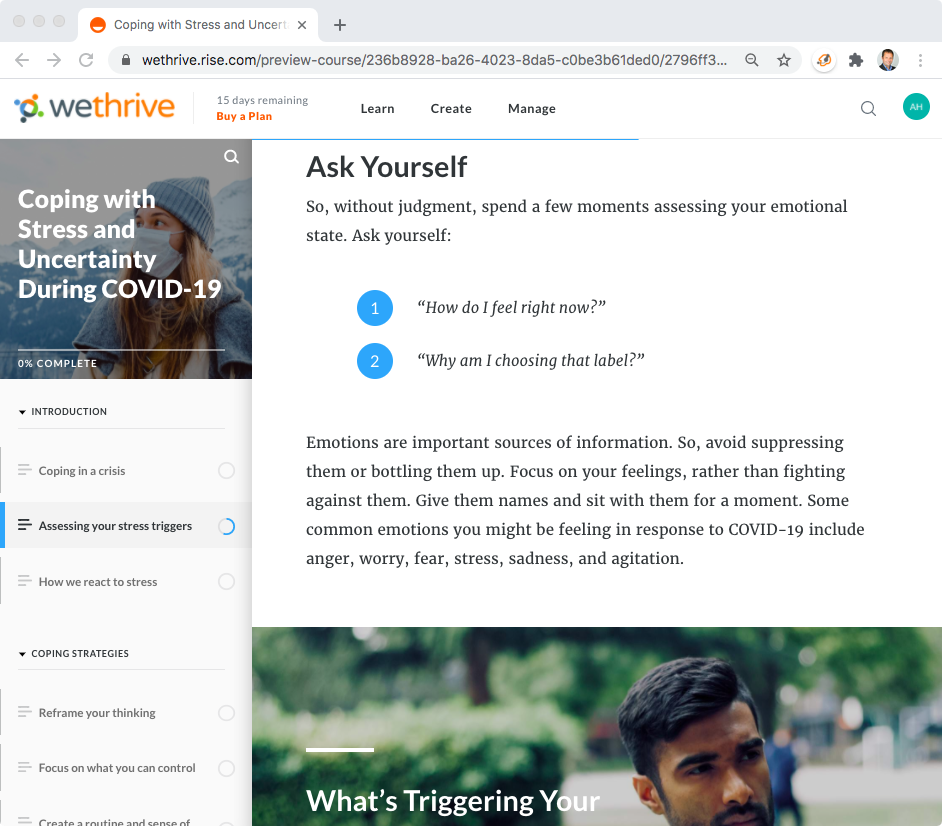This guide has been developed to help those managing remote teams better understand the needs of their people. The working landscape has changed drastically over the last 12 months, and there is one thing almost everyone can agree on: remote and hybrid working is here to stay. But how will this affect managers?

Quick links
The difference between managing remote teams and office-based teams
7 tips for becoming a good remote team manager
New skills for managing remote teams
Managing remote teams with purpose-built digital tools
The difference between managing remote teams and office-based teams
Managers have been dealt a difficult hand over the last year. Very few had prior experience managing remote teams, and for those that did it was under much less concerning circumstances.
In the remote working world, even experienced managers struggle to know the questions to ask that dig into what will really motivate someone or what has thrown them off course.

In our white paper: Surviving and Thriving in the Brave New World, we explored the knowledge, skills and resources remote team managers need to keep their people happy, focused, and productive.
By far the biggest challenges revolve around communication, social connection and trust. It is these areas in which managing remote teams must work differently to office-based teams.
In-person meetings were the prime means of communication for very good reasons. They were the go-to tool for problem-solving and spotting when team members were unhappy, distracted or confused. Without this option, finding out how employees feel is a far more difficult task.
How easy is it to truly understand how your people feel over Zoom? When employees are only speaking with you once a week it’s easy for them to disappear into the background, and they could just be telling you what they want you to hear.
It was once relatively simple to keep our teams engaged. With the ability to control the working environment, keep an eye on our teams and create a general feeling of camaraderie in the office, managers had lots of tools in their belt. But now, keeping remote teams engaged requires a new mindset, new tools and new forms of communication.
7 tips for becoming a good remote team manager
We’ve established that managing a remote team faces an entirely different set of challenges. But what qualities should a good remote team manager have? In our blog Listen and act: Seven tips for becoming a good manager we outlined some of the essentials.
1. Listen and act
Even if you don’t have regular employee experience surveys it’s still important to sit down with your employees and have a one-on-one meeting every few weeks to find out how they are.
Where possible when they raise concerns act on them and feedback where you’re at on a regular basis. Of course, you won’t be able to fix everything but showing you want to help can go a long way.
2. Ask for feedback and stick to one to one sessions

Start by asking how often your employees would like to meet on a one-to-one basis – some will be happy with once a month, others once a week but however often you agree to meet, stick to it. This is crucial to ensure your people feel valued and comfortable.
For a quality template see our One-on-One Meeting Template for Remote Managers.
3. Lead by example
Manager’s behaviour has been scrutinised like never before whilst working remotely, so you must lead by example. If you want your team members to turn up for meetings on time, support each other and create a happy remote environment you must ensure you set a good example. Arrive a few minutes early, every time for meetings. Praise your team’s efforts and make time for casual chat. It won’t go unnoticed and you’ll see an improvement in performance.
4. Set achievable goals
Without clear goals how do we know if we’re doing a good job? Goals and KPIs are important for setting clear expectations and enabling performance management.
Setting daily, weekly, monthly and yearly goals is important not only for individuals but for the remote team overall. It will help you to pull together as a group in tougher times and celebrate when your team achieves above and beyond what was expected.
5. Be consistent
Where possible manage employees with consistency and save any difficult conversations for those one-on-one meetings, not in your team huddles or other online meetings.
Don’t be afraid to change to ensure there is consistency when managing remote teams. If there is a meeting at 2pm on Thursday that people are late for because the meeting beforehand overruns then simply change the time. It’s easier than ever to fit everyone around a schedule now that calendars are easily synced and meetings take place online.
6. Don’t micro-manage
This can be tricky, particularly if you’re a new line manager who is conscientious about what you do and has little-to-no experience managing remote teams.
Unfortunately though micro-managing doesn’t benefit anyone. Not your employee, not your organisation and not you. We all make mistakes, it’s how we learn and get better. Giving people autonomy in their work empowers them and actually means they are less likely to make mistakes in the first place.
This doesn’t necessarily mean leaving people to their own devices all day – just make sure when you’re checking in that you’re not excessively supervising every aspect of their work.
7. Say thank you
Let’s get back to basics! All the top leaders know that saying thank you is an incredibly powerful motivator and it costs nothing. Unfortunately failing to show gratitude to employees means you won’t get the best from them.
A lack of gratitude at work leaves employees feeling unsatisfied, unappreciated and demotivated, all of which have a significant impact on employee happiness and productivity.
New skills for managing remote teams
Ultimately, in this new environment managing remote teams requires a new skill set. How can managers be prepared for maintaining morale, teamwork and productivity in such disparate times? As well as looking after the needs of their team, managers have to adapt their own working practices.
So how can you train managers outside the classroom? Away days are a thing of the past thanks to Covid-19, and delivering the same training content via video meeting platforms doesn’t have the same effect. In fact, VILT (video instructor led training) decreased by 31% over the first few months of the pandemic, illustrating that the “Zoom Boom” isn’t totally scalable for learning.
Luckily, investment in eLearning has soared, and we’ve seen a marked increase in L&D and HR departments are adopting e-learning strategies moving forward, with 82% aiming to produce more e-learning materials.
Choosing the right eLearning course for remote team managers
There can be no doubting the potential and breadth of eLearning, but it is not always the ideal solution. Firstly, there is the issue of finding an authoritative course. Anyone can record an instructional video (all you need is a smartphone), but not everyone is qualified to set themselves up as a professional trainer. The variation in quality can be enormous.
Secondly, not everyone can engage with online learning. It takes time and willpower to plough through a course and it is easy to find your mind wandering (or your eyelids drooping).
Thirdly, it is not always easy to find a relevant course – particularly for those managing remote teams. Does the course meet your exact needs as a line manager who is managing remote workers?
WeThrive’s eLearning course for managing remote teams
The key is to find a learning method that is practical and targeted to the needs of the manager.
WeThrive has an eLearning course which is highly relevant for managing remote teams as it links to the results of your employee engagement survey. Training has been carefully designed to strike the right balance between theory and practice – ensuring you leave with the knowledge, skills and resources you need for managing remote teams.
How to motivate remote teams
Motivating remote teams has been one of the most significant challenges leaders faced during Covid-19. When we were all together in the office, motivating teams could be a breeze. Under normal circumstances we could introduce office incentives or create a more stimulating environment. Thanks to lockdown, jump-starting motivation has become far more difficult than it once was.
Without a motivated, happy workforce productivity and quality of work will decline and leave your employees feeling hopeless about work.
In our webinar: 5 tips for unlocking motivation in your remote team + ask the expert Q&A we looked at some of the alternative ways in which managers and business leaders can foster long-term, sustainable motivation in their remote teams.
Managing remote teams with purpose-built digital tools
Bridging the gap between the pre-Covid world and the new world of individual employee experiences can be overwhelming. Digital tools such as Zoom, Slack and Google Drive have made the practical transition of managing remote teams easier. But getting the people strategy transition right is where many organisations have struggled.
How can we help?
WeThrive makes your remote people strategy simple. With WeThrive Bubbles your people can take control of their own employee experience using our unique self-assessment surveys. They’ll get instant feedback and recommendations to create goals and improve their employee experience, leaving managers to focus on what really matters.
Results and insights are fed-up to your Manager Bubble where you can get the full picture of your team. See what changes you should be making in your remote team with your unique manager dashboard.
For more information on improving productivity with remote tools watch our webinar: How managers can use digital tools to improve productivity in remote teams.







